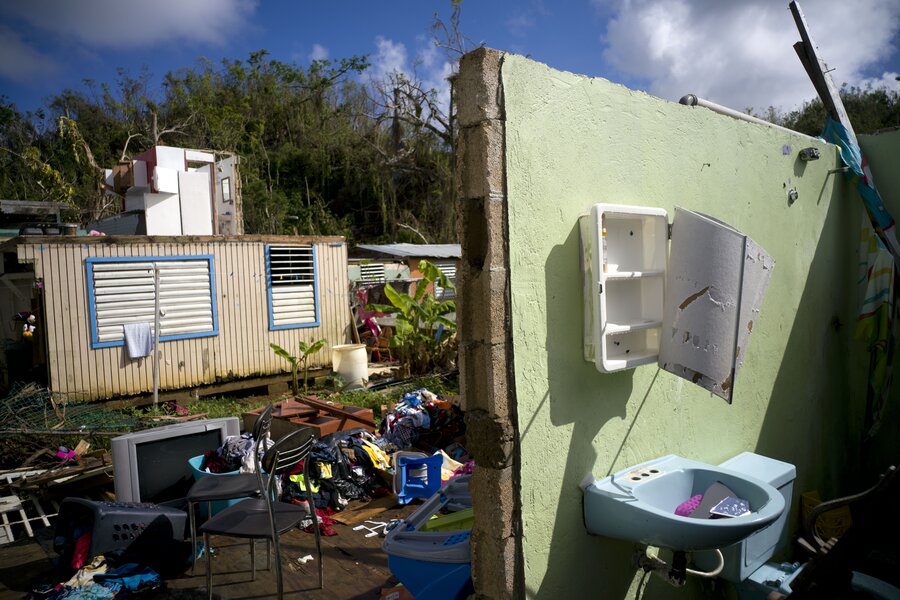The real story in Puerto Rico
Loading...
It would be easy to paint a gloomy picture of Puerto Rico at year’s end.
Three months after hurricane Maria struck the island only 70 percent of electrical power generation has been restored. And that figure doesn’t take into account downed lines that keep even that electricity from reaching many homes.
New research by news media organizations into death records has shown that more than 1,000 fatalities can be attributed to the storm and its aftermath, a huge increase over the current official total of just 64.
An international human rights organization, Refugees International, has criticized relief efforts by both the federal and Puerto Rican governments as showing “poor coordination and logistics on the ground” that have “seriously undermined the effectiveness of the aid delivery process.”
On Tuesday US Housing and Urban Development Secretary Ben Carson visited the island and struck a more positive note, assuring a group of local officials, “We are in this for the long haul.” Current emergency relief efforts will be followed up by HUD’s help in rebuilding homes, he said.
No doubt the logistics involved in aiding 3.4 million Americans living on an island far off the US mainland, where poverty and a suspect power grid already existed, are daunting.
But it’d be wrong to not point out some good news as well. Celebrities such as movie star Jennifer Lopez and Lin-Manuel Miranda, creator of the Broadway megahit “Hamilton,” have raised millions of dollars in relief aid and continue to make known the island’s need for help.
Church groups across the United States have responded with heartfelt relief efforts. In Lexington, Mass., for example, the Lexington Interfaith Clergy Association sponsored a drive called Lexington Unites for Puerto Rico that resulted in a 40-foot container with lanterns, clothes, water, food, and other supplies being delivered to residents of Cabo Rojo and Aguadilla, two towns hit hard by the hurricane.
Local church members there helped unload and distribute the donations to those most in need. The US group expects to continue its efforts, becoming a long-term commitment.
All Americans ought to keep the people of Puerto Rico in mind as they go about their end-of-year charitable giving.
But they can do so not with a sense of pity but with a feeling of rejoicing in the resilience being expressed by Puerto Ricans. From all over the island have come reports of neighbors helping neighbors, sharing what they have and checking in on each other. Some have worked with whatever tools they could find to clear debris and open the roads; many are rebuilding their homes with whatever materials they can find, not waiting for outside aid.
Writer Rebecca Solnit studies disasters and how people respond to them, from the 1906 San Francisco earthquake to the 2005 hurricane that flooded New Orleans. Too often, she says, the wrong stories are told.
“[E]verything we’ve been told about disaster by trashy Hollywood disaster movies ..., everything [in] the news – is that human beings are fragile” and will quickly revert to me-first looting and even savagery.
Instead, “When all the ordinary divides and patterns are shattered, people step up to become their brothers’ keepers,” she says. “And that purposefulness and connectedness brings joy even amidst death, chaos, fear, and loss.”
As we acknowledge the ability of Puerto Ricans to help themselves we’ll find ourselves encouraged to join with them in our prayers and with charitable donations.





